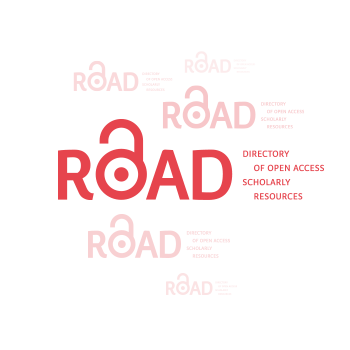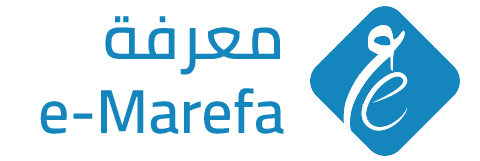Using an Interactive Learning Model of Teaching Physics Labs Due to Corona Virus
DOI:
https://doi.org/10.59994/pau.2024.2.58Keywords:
E-Lab, Smart Phone, Augmented Reality, CoronaAbstract
Due to the corona virus pandemic, with a problem has emerged with courses that need practical laboratories, such as physics, chemistry and biology, as they cannot be applied remotely. Therefore, in this research, we aimed to develop an educational and smart system for physics labs, which is considered one of the most difficult subjects. This paper identifies how augmented reality can be used to teach the physics labs remotely and proposes a mobile application using the augmented reality technique to teach students the physics labs by using mobile technologies. The application provides all the options to conduct the experiments of the physics lab 1 and 2 courses. Through a usable graphical interface and augmented reality technique, the student enters the mobile app then chooses any experiments that he/she wants to practice and finally, the results are recorded. Furthermore, the students can repeat the experiments several times to improve their knowledge and skills. This application forms a basic step in the educational lab teaching in the higher education, and which can be improved to be compatible with more smart devices and applicable to more labs than physics.
Downloads
References
Altmeyer, K., Kapp, S., Thees, M., Malone, S., Kuhn, J., & Brünken, R. (2020). The use of augmented reality to foster conceptual knowledge acquisition in STEM laboratory courses—Theoretical background and empirical results. British Journal of Educational Technology, 51(3), 611-628.
Andujar, J. M., Mejías, A., & Márquez, M. A. (2010). Augmented reality for the improvement of remote laboratories: an augmented remote laboratory. IEEE transactions on education, 54(3), 492-500.
Azuma, R. T. (1997). A Survey of Augmented Reality. PRESENCE: Virtual and Augmented Reality, 6(4), 355-358.
Bower, M., Howe, C., McCredie, N., Robinson, A., & Grover, D. (2014). Augmented Reality in education–cases, places and potentials. Educational Media International, 51(1), 1-15.
Costa, M. C., Manso, A., & Patrício, J. (2020). Design of a mobile augmented reality platform with game-based learning purposes. Information, 11(3), 127.
Garzón, J., & Acevedo, J. (2019). Meta-analysis of the impact of Augmented Reality on students’ learning gains. Educational Research Review, 27, 244-260.
Kerawalla, L., Luckin, R., Seljeflot, S., & Woolard, A. (2006). “Making it real”: exploring the potential of augmented reality for teaching primary school science. Virtual reality, 10, 163-174.
Kesim, M., & Ozarslan, Y. (2012). Augmented reality in education: current technologies and the potential for education. Procedia-social and behavioral sciences, 47, 297-302.
Lee, K. (2012). Augmented reality in education and training. TechTrends, 56, 13-21.
Nilsook, S. T. a. P. (2015). Using Augmented Reality for Teaching Physics. s.l., The sixth International e-Learning Conference.
Ozdemır, M., Sahın, C., Arcagok, S., & Demır, M. K. (2018). The effect of augmented reality applications in the learning process: A meta-analysis study. Eurasian Journal of Educational Research, 18(74), 165-186.
Pence, H. E. (2010). Smartphones, smart objects, and augmented reality. The Reference Librarian, 52(1-2), 136-145.
Saltan, F., & Arslan, Ö. (2016). The use of augmented reality in formal education: A scoping review. Eurasia Journal of Mathematics, Science and Technology Education, 13(2), 503-520.
Scrivner, O., Madewell, J., Buckley, C., & Perez, N. (2016, December). Augmented reality digital technologies (ARDT) for foreign language teaching and learning. In 2016 future technologies conference (FTC) (pp. 395-398). IEEE.
Thees, M., Kapp, S., Strzys, M. P., Beil, F., Lukowicz, P., & Kuhn, J. (2020). Effects of augmented reality on learning and cognitive load in university physics laboratory courses. Computers in Human Behavior, 108, 106316.
Tzima, S., Styliaras, G., & Bassounas, A. (2019). Augmented reality applications in education: Teachers point of view. Education Sciences, 9(2), 99.
WHO. (2020 a). Laboratory testing for coronavirus disease. WHO.
WHO. (2020 b). COVID-19. Retrieved from www.who.int: https://2u.pw/tceerCAz
WHO. (2020 c). Mendely. COVID-19 Retrieved from: www.mendely.com.
Yuen, S. C. Y., Yaoyuneyong, G., & Johnson, E. (2011). Augmented reality: An overview and five directions for AR in education. Journal of Educational Technology Development and Exchange (JETDE), 4(1), 11.
Downloads
Published
How to Cite
Issue
Section
License
Copyright (c) 2024 Journal of Palestine Ahliya University for Research and Studies

This work is licensed under a Creative Commons Attribution 4.0 International License.
مجلة جامعة فلسطين الاهلية للبحوث والدراسات تعتمد رخصة نَسب المُصنَّف 4.0 دولي (CC BY 4.0)











